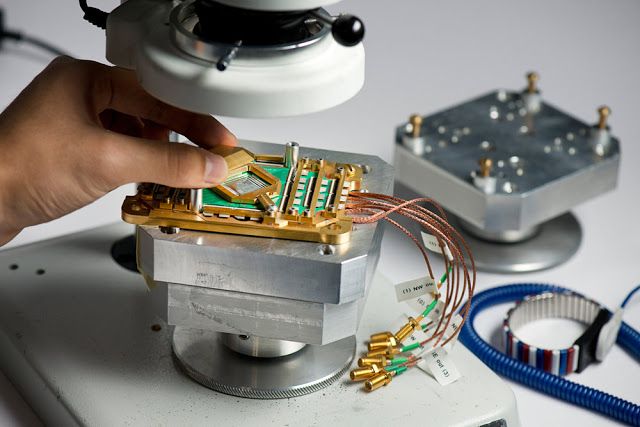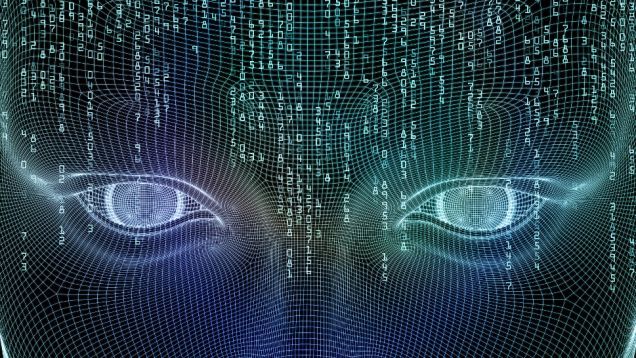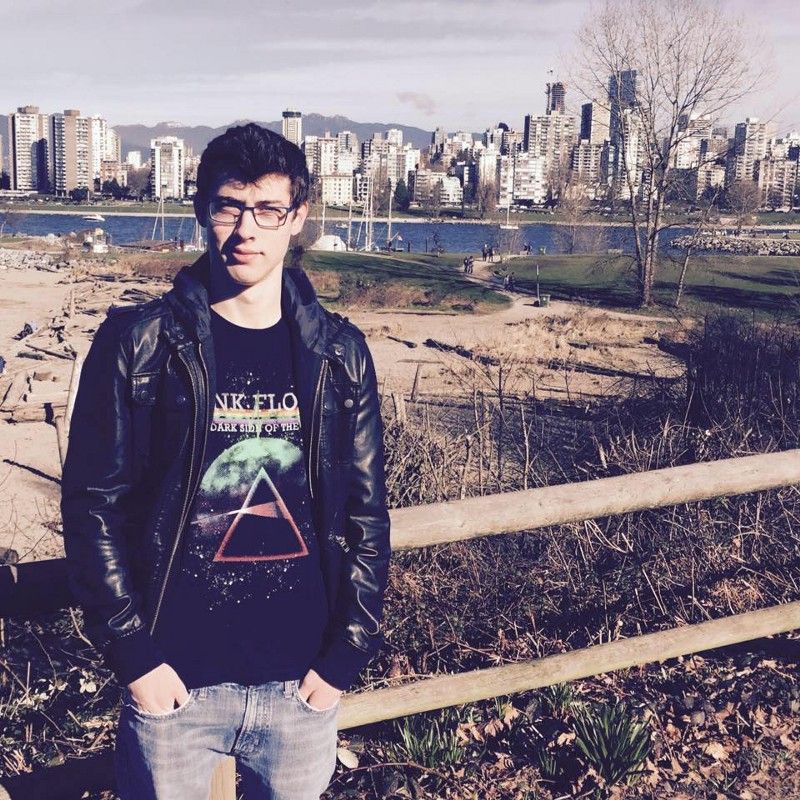“French members of parliament (MPs) have voted to give the government extra powers to block online communications when the country is under a “state of emergency.””


“French members of parliament (MPs) have voted to give the government extra powers to block online communications when the country is under a “state of emergency.””

D-Wave Systems Inc., the world’s first quantum computing company, announced that Los Alamos National Laboratory will acquire and install the latest D-Wave quantum computer, the 1000+ qubit D-Wave 2X™ system. Los Alamos, a multidisciplinary research institution engaged in strategic science on behalf of national security, will lead a collaboration within the Department of Energy and with select university partners to explore the capabilities and applications of quantum annealing technology, consistent with the goals of the government-wide National Strategic Computing Initiative. The National Strategic Computing Initiative, created by executive order of President Barack Obama in late July, is intended “to maximize [the] benefits of high-performance computing (HPC) research, development, and deployment.”
“Eventually Moore’s Law (that predicted that the number of transistors on an integrated circuit would double every two years) will come to an end,” said John Sarrao, associate director for Theory, Simulation, and Computation at Los Alamos. “Dennard Scaling (that predicted that performance per watt of computing would grow exponentially at roughly the same rate) already has. Beyond these two observations lies the end of the current ‘conventional’ computing era, so new technologies and ideas are needed.”
“As conventional computers reach their limits in terms of scaling and performance per watt, we need to investigate new technologies to support our mission,” said Mark Anderson of the Laboratory’s Weapons Physics Directorate. “Researching and evaluating quantum annealing as the basis for new approaches to address intractable problems is an essential and powerful step, and will enable a new generation of forward thinkers to influence its evolution in a direction most beneficial to the nation.”

Interesting…
According to Steve Jurvetson, venture capitalist and board member at pioneer quantum computing company D-WAVE (as well as others, such as Tesla and SpaceX), Google has what may be a “watershed” quantum computing announcement scheduled for early next month. This comes as D-WAVE, which notably also holds the Mountain View company as a customer, has just sold a 1000+ Qubit 2X quantum computer to national security research institution Los Alamos…
It’s not exactly clear what this announcement will be (besides important for the future of computing), but Jurvetson says to “stay tuned” for more information coming on December 8th. This is the first we’ve heard of a December 8th date for a Google announcement, and considering its purported potential to be a turning point in computing, this could perhaps mean an actual event is in the cards.
Notably, Google earlier this year entered a new deal with NASA and D-WAVE to continue its research in quantum computing. D-WAVE’s press release at the time had this to say:

Scientists have discovered a way to authenticate or identify any object by generating an unbreakable ID based on atoms.
I think about pros and cons of living in a connected world … think about it …sometimes the answer it is not so simple, nor unique.
http://www.fas.org/sgp/crs/misc/R44227.pdf by Eric A. Fischer — Senior Specialist in Science and Technology, October 13, 2015

https://www.youtube.com/watch?v=W9N_Fsbngh8
During a recent United Nations meeting about emerging global risks, political representatives from around the world were warned about the threats posed by artificial intelligence and other future technologies.
The event, organized by Georgia’s UN representatives and the UN Interregional Crime and Justice Research Institute (UNICRI), was set up to foster discussion about the national and international security risks posed by new technologies, including chemical, biological, radiological, and nuclear (CBRN) materials.
The panel was also treated to a special discussion on the potential threats raised by artificial superintelligence—that is, AI whose capabilities greatly exceed those of humans. The purpose of the meeting, held on October 14, was to discuss the implications of emerging technologies, and how to proactively mitigate the risks.

Professor Nick Bostrom briefed political representatives from around the world on the national and international security risks posed by artificial intelligence and other future technologies at a UN event last week.
Professor Bostrom, Director of the Future of Humanity Institute, Oxford Martin School, was invited to speak at a special side event examining the challenges posed by chemical, biological, radiological and nuclear (CBRN) materials and weapons, held during the UN’s 2015 General Assembly meeting.
The event was organised by Georgia’s UN representatives, in collaboration with the United Nations Interregional Crime and Justice Research Institute (UNICRI), with the aim of understanding the implications of new technologies, ensuring responsible development and mitigating against misuse.

There are over 500 million hungry people in the world—but that number only tells part of the story. The other part of it is the amount of the actual food shortfall. So how much food would we need to make up the gap? There’s now an exact number.
The latest International Food Security report is out, and the good news is that global food insecurity has been falling—and it’s projected to keep on doing that over the next 10 years. The bad news? It’s not falling everywhere. Sub-Saharan Africa is especially being shut out of these gains.
But how much food would it take to close the gap for every food insecure person on the planet to have access to 2,100 calories a day? The USDA has calculated a figure: 11.8 million tons of grain.

A piece I wrote recently about blockchain & AI, and how I see the Lifeboat Foundation as a crucial component in a bright future.
Blockchain technology could lead to an AI truly reminiscent of the human brain, with less of its frailties, and more of its strengths. Just as a brain is not inherently dictated by a single neuron, neither is the technology behind bitcoin. The advantage (and opportunity) in this sense, is the advent of an amalgamation of many nodes bridged together to form an overall, singular function. This very much resembles the human brain (just as billions of neurons and synapses work in unison). If we set our sights on the grander vision of things, humans could accomplish great things if we utilize this technology to create a truly life-like Artificial Intelligence. At the same time, we need to keep in mind the dangers of such an intelligence being built upon a faultless system that has no single point of failure.
Just as any technology has upsides and corresponding downsides, this is no exception. The advantages of this technology are seemingly endless. In the relevant sense, it has the ability to create internet services without the same downfalls exploited in the TV show ‘Mr. Robot,’ where a hacker group named “fsociety” breached numerous data centers and effectively destroyed every piece of data the company held, causing worldwide ramifications across all of society. Because blockchain technology ensures no centralized data storage (by using all network users as nodes to spread information), it can essentially be rendered impossible to take down. Without a single targeted weak point, this means a service that, in the right hands, doesn’t go offline from heavy loads, which speeds up as more people use it, has inherent privacy/security safeguards, and unique features that couldn’t be achieved with conventional technology. In the wrong hands, however, this could be outright devastation. Going forward, we must tread lightly and not forget to keep tabs on this technology, as it could run rampant and destroy society as we know it.
Throughout the ages, society has always experienced mass change; the difference here being the ability for it to wipe us out. Therefore, it arises from a survival imperative that we strive for the former rather than the latter. We can evolve without destroying ourselves, but it won’t be a cakewalk. With our modern-day luxuries, we, as a species think ourselves invincible, while, in reality, we’re just dressed-up monkeys operating shiny doomsday technology. Just as it was a challenge to cross the seas, to invent tools and harness electricity, the grandest stakes posed by the future (and the ones defining our survival) are the most difficult to accomplish.